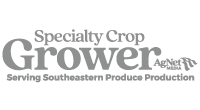The Florida Department of Citrus held a research and budget workshop on Oct. 4. Rosa Walsh, director of scientific research, presented an overview of the general funds received for research this fiscal year along with several possibilities for use of these funds for feedback from the Florida Citrus Commission (FCC). Walsh reported that $1.65 million was received in general revenue …
Seeking Injection Alternatives and Additions
The Citrus Research and Development Foundation (CRDF) approved three new projects during its September board of directors meeting. The projects will test the injection of different antimicrobial materials to treat HLB. One project will be managed by Ozgur Batuman, a citrus pathologist with the University of Florida Institute of Food and Agricultural Sciences (UF/IFAS). Another will be run by Kranthi …
A Grove-First Approach
In the nearly two decades that huanglongbing (HLB) has plagued Florida citrus groves, about $1 billion has been spent in the search for solutions. A lot of great scientists in Florida and around the world have worked on the problem, and a silver bullet, if there is one to be found, has been elusive. Researchers, along with growers, have developed …
Treat HLB Trees With the Right PGR at the Right Time
By Tripti Vashisth, Wesley Webb and Taylor Livingston As trees become symptomatic for HLB, leaves experience an imbalance of plant hormones. This hormonal imbalance exacerbates HLB symptoms and can lead to more stem dieback, poor vegetative growth and fruit drop. This ultimately leads to reduced bearing wood, resulting in yield losses and tree decline. Thus, the use of growth-promoting hormones …
Wang Appointed to Graves Eminent Scholar Chair
Citrus researcher Nian Wang has been appointed to the Graves Eminent Scholar Chair in Biotechnology at the University of Florida Institute of Food and Agricultural Sciences (UF/IFAS). Wang is a professor of microbiology and cell science at the Citrus Research and Education Center (CREC). He was appointed to the chair because of his work to develop a tree resistant to …
Gene Confers Resistance to HLB and Citrus Canker
In August, Horticulture Research published a paper titled An endolysin gene from Candidatus Liberibacter asiaticus confers dual resistance to huanglongbing and citrus canker. Researchers found that an endolysin encoded by the Candidatus Liberibacter asiaticus (CLas) prophage has dual resistance to huanglongbing (HLB) and citrus canker. A prophage is the genetic material of a bacteriophage, and a bacteriophage is a virus …
Transgenic Efforts Against HLB
Matthew Mattia recently provided an overview of work at the U.S. Department of Agriculture Agricultural Research Service (USDA ARS) transgenic test site in Fort Pierce. Transgenic refers to an organism that contains genetic material into which DNA from an unrelated organism has been artificially introduced. Scientists at the Picos Farm screen transgenics for suppression of citrus Candidatus Liberibacter asiaticus (CLas), …
USDA Funds Three Georgia Citrus Projects
The U.S. Department of Agriculture Agricultural Marketing Service (USDA AMS) funded three citrus projects in Georgia for fiscal year 2023. SATSUMA EDUCATIONThe Georgia Department of Agriculture (GDA) received $103,225 for a satsuma education project. GDA will partner with local farmers and produce distributors to increase the availability of Georgia-grown satsuma mandarins in retail locations. The project will work closely with …
Agrobacteria Shows Promise Against HLB
U.S. Department of Agriculture Agricultural Research Service (USDA ARS) scientists have discovered a way to augment a citrus tree’s natural resistance to pathogens, including HLB. The scientists are in the Crop Improvement and Genetics Research (CIGR) unit in Albany, California. According to James Thomson, a geneticist at CIGR, by incorporating receptors that can recognize pathogens, scientists are able to activate …
California and Arizona Citrus Projects Funded
The California and Arizona departments of agriculture received funding for four citrus-related projects from the U.S. Department of Agriculture’s (USDA) Agricultural Marketing Service (AMS) for 2023. Nationwide, USDA AMS allocated $72.9 million in Specialty Crop Block Grant Program funding. DROUGHT-TOLERANT VARIETIESThe California Department of Food and Agriculture (CDFA) received $499,921 for designing drought-tolerant specialty crops using metabolic modeling. The University …
Connecting Research for Better HLB Management Results
By Megan Dewdney To make informed management decisions, growers need to know about and understand the findings from huanglongbing (HLB) research that are currently available. However, the delivery of research results to growers is often fragmented, and results can be difficult to find. Furthermore, what information and conclusions are available to growers from projects or scientific journals can be highly …
The Benefits of Growing Citrus on UV-Metalized Reflective Mulch
By Jawwad Qureshi, Lauren Diepenbrock and Davie Kadyampakeni Protecting citrus trees from the Asian citrus psyllid (ACP) is critical to reducing the spread and severity of huanglongbing (HLB) or citrus greening disease. ACP, the vector of the pathogen responsible for causing HLB in citrus, needs young shoots to develop and reproduce. The frequent availability of viable shoots in young trees …
Hairy Approach May Get to the Root of HLB
Developing disease-resistant, high-quality improved crop varieties may seem like a “hairy” task, but Texas A&M AgriLife Research scientists may have gotten to the root of the issue. A new biological technology that develops and multiplies disease-resistant citrus plants is under development by an AgriLife Research team led by Kranthi Mandadi. Mandadi is an associate professor at the Texas A&M AgriLife Research …
Drinking Orange Juice Lowers Dementia Risk
A recent study finds that moderate consumption of up to one cup per day of natural juices, such as 100% orange juice (OJ), lowers the risk of dementia. Inversely, consuming up to two cups per day of artificially sweetened beverages, and more than two cups per day of sugar-sweetened beverages, increases the risk of dementia. The study was published by …
How to Access CRAFT Grower Data
The Citrus Research and Field Trial Foundation, Inc. (CRAFT) has a website with a public dashboard that houses the data that participating growers have submitted. A recent University of Florida Institute of Food and Agricultural Sciences (UF/IFAS) Extension newsletter included an article describing how to access the data from the CRAFT grower field trials. The article, summarized here, was written …
CRDF Board Focused on HLB Treatments
The Citrus Research and Development Foundation (CRDF) board of directors meeting in July focused largely on the use of oxytetracycline (OTC) as an HLB treatment in citrus. The board considered projects testing it in combination with other antimicrobial compounds or as a standalone treatment. Trunk injection of OTC has given the Florida citrus industry hope that it might be a …
Biggest Need for Georgia Citrus Is Research
The Georgia Citrus Commission members have been selected to serve the state’s up-and-coming industry. Now it is time for those five individuals to determine the pathway for the industry to be successful for the foreseeable future. Commission member Lindy Savelle believes research is the key component in advancing the state’s citrus industry. She said that is why the Georgia Citrus …
Land Grant Research Prioritization Act Introduced
U.S. senators from Florida and Georgia have introduced legislation authorizing the U.S. Department of Agriculture (USDA) to make priority research grants available for land-grant universities. The grants would fund research and development of agricultural applications of artificial intelligence (AI), advanced mechanized harvester technologies, invasive species control and aquaculture. The senators who introduced the Land Grant Research Prioritization Act are Marco …
Grower-Friendly HLB Research Summaries
The U.S. Department of Agriculture National Institute of Food and Agriculture (USDA NIFA) provides research directed at overcoming the devastating HLB disease and protecting the nation’s citrus industry. Since 2014, NIFA has funded approximately $200 million for HLB research projects. Many HLB-related NIFA project one-page summaries are now easily accessible and written in a grower-friendly language and format on the …
Capitalize on Cooperative Research
By Larry Duncan The growers advising the Citrus Research and Development Foundation understand very well the importance of cooperative research projects between growers and scientists. Several years ago, they earmarked a portion of research funding, not for carefully managed laboratory experiments or small plot trials at state, federal or private research centers, but rather for grower-run trials testing potential HLB …





























